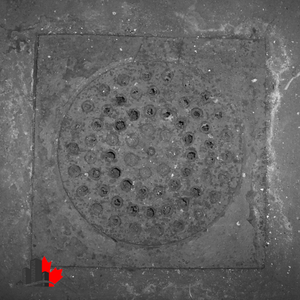3 Sewage Backup Signs You Shouldn't Ignore
Posted in Sewage Backup Cleanup, on February 16, 2022 By admin
A sewage backup in your basement is an unfortunate experience — it’s disruptive, dangerous, and overall, incredibly inconvenient. The bacteria in sewage backup makes it far more dangerous and hazardous than other types of water damage you may experience, so it’s imperative to contact Water Damage Toronto immediately for water damage restoration in Toronto. While most cases of water damage are out of your control, it helps to recognize the potential signs that sewage backup may happen soon.
To learn more about the signs of sewage backup in your basement, continue reading.
Causes of Sewage Backup
 There are a few causes of sewage backup: clogs, sewer line damage, and tree root intrusion. Recurring clogs are a huge reason why sewage backup may happen in your home. If things like oil, hair, or flushable wipes go down your drain, they are likely why you experience slow draining and clogs. If tree roots are growing near your sewer line, they will actively seek out a water source, ultimately damaging the pipe and causing a backup.
There are a few causes of sewage backup: clogs, sewer line damage, and tree root intrusion. Recurring clogs are a huge reason why sewage backup may happen in your home. If things like oil, hair, or flushable wipes go down your drain, they are likely why you experience slow draining and clogs. If tree roots are growing near your sewer line, they will actively seek out a water source, ultimately damaging the pipe and causing a backup.
1. Bubbling Drains or Toilets
If you notice air bubbles coming up through your drains, like in your bathroom or kitchen sinks, or your toilets while you’re using them, that’s because the water is unable to flow through your plumbing system as if everything was normal. If you’re unsure and want to check for air bubbles, fill your sinks with some water — no more than 3 inches — and if the water bubbles when it drains.
If bubbling drains is the norm in your home, you need to contact a professional right away to fix the issue. If you let this issue progress, sewage backup may be imminent, and you’ll need to get a professional for water damage restoration in your Toronto home. In the instance that sewage backup in your basement occurs, be sure to stay away from the area and call Water Damage Toronto right away; our team can arrive quickly at the scene and return your home to its normal condition.
2. Slow Draining and Clogs
Another telltale sign that sewage backup may be imminent is that your sinks, toilets, or tubs simply will not drain — or it’s incredibly slow. This happens due to a clog in a pipe not letting wastewater pass and usually begins with the lowest drain in your home. If you notice that your basement or first floor sinks or toilets are slow to drain, it’s a clear sign you need to get your pipes fixed; if not, you risk facing water damage and sewage backup in your home.
3. Odours
If you begin to notice a foul, unpleasant odour from your drains, it means that the wastewater isn’t being properly transported away from your property. The foul smell of sewage, paired with gurgling toilets or slow draining, indicates that sewage backup in your home is bound to happen. Before anything happens, contact a professional to help resolve the issue.
What To Do About a Sewage Backup in the Basement
Water damage should be repaired and cleaned up within the first 48 hours of it happening to limit the damage to your home, but with sewage backup, restoration should happen as soon as possible due to the health hazards of black water damage.

